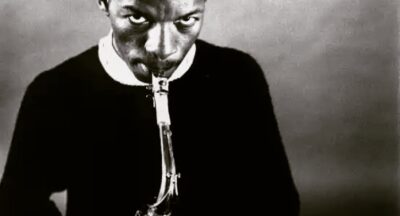
Processing An Event Creatively With Groups
I recently did a presentation at the MAR-AMTA Music Therapy Conference in Scranton, PA. I love attending and participating in conferences because I get inspired AND I get the opportunity to inspire others.
In my presentation, I shared with an enthusiastic group of people some ideas on how we can help others use music to improve the quality of their existence. I proposed a multi-modal approach to helping children in medical rehabilitation develop coping, social, and self assessment skills.
We focused on a project I facilitated in a semi-acute pediatric unit at a hospital in New York City, where I taught participants how to process and creatively express their reactions to a given event. The process included songwriting, recording, and video production. We collected all the media taken at the event and created a four minute long video. We also wrote and recorded a song to use as soundtrack, and finally showcased the final product to the entire unit. The project helped bring together patients, family members, and staff, to celebrate the accomplishments of all. My primary role as a facilitator was to inspire the group to think musically and creatively, connect with their thoughts and emotions, work with peers, and inspire one another.
The following are a few tips that we learned in the process.
1. Start the creative process while the event is fresh in the minds of the participants
The music and video we created was about a very meaningful Olympics event that was held in the facility and gave children with disabilities and complex medical conditions an opportunity to collaborate and achieve through healthy adaptive competition. Important calendar dates like Mothers’ Day, Valentine’s Day, Christmas, or even tragic events that hit our community are also good opportunities to engage a group in a creative project. When the event is fresh in the minds of the participants it is easier to connect and access detailed memories, images and emotions that help the process evolve smoothly.
2. Use existing familiar chord progressions in the songwriting process
Familiar and stylistic chord progressions give members direction, structure, and confidence in their writing. When participants hear that their own music can sound like the music they listen to, their creativity and inspiration will kick off. Once you choose from an existing chord progression and get the process going, you can make adjustments and add or substitute chords as you see it to give the song personality.
3. Allow participants to be part of the technicalities of the process
Sometimes we focus so much on facilitating the creative process that we forget that technical preparations may actually be extremely therapeutic as well. During my internship in 2005 at the Institute for Music and Neurologic Function, I remember feeling highly stressed one day while having some technical difficulties in a duet session. I was down on the floor connecting some cables trying to make the piano talk to the computer (it was more complicated back then than it is now) while my two patients were already in the studio waiting anxiously and desperately… or so I thought. To my surprise, when I crawled back from the floor behind the desk, I found both clients staring in awe with the widest pair of eyes I had ever seen in either of them. For these patients, getting out of their rooms to come down to the studio and witness the process of setting up of all these cables and instruments was an out-of-the-norm activity that really took them out of their lethargic routine and into a new world. I look at set-up-time as potentially therapeutic ever since and I try to involve participants when possible.
4. Focus on individual and group strengths
One of the participants in this group had fantastic diction and memory skills but was quite shy when it comes to musical expression. She was a good friend of another participant who on the contrary, was very outgoing and confident but had difficulties with memory and speech. When they sang together, each of their strengths diminished each other’s weaknesses. Participant 1 borrowed the ego of Participant 2, while Participant 2 borrowed the memory and speech of Participant 1. Together they sounded fantastic! Group dynamics are evident in any creative group process. Allow them to do their magic.
5. Make sure the song and recording reflects individual and group personalities
Think of the 80’s classic “We are the world”, recorded by the community of musicians of the time to promote awareness of hunger in Africa. It is so interesting to hear all these singers sing the same song in their very own particular style. The personality of each singer shines through in its own way, while the group has a personality and a purpose of its own. Of course, the personality and singing style of our clients may not be as developed as Stevie Wonder’s or Bob Dylan’s, but that does not mean that you cannot use them as guide and inspiration.
http://youtu.be/M9BNoNFKCBI
arielweissberger
Related Posts
Songs For Father’s Day
1.Beautiful boy (John Lennon) This is one of the happiest songs I can think of....
Mourning Music
I recently lost my beloved grandfather Emmanuel Wapinski. In Judaism, we do not...
Songs for Valentine: Which one are you?
There are infinite ways to express love and romance through song. Which one fits...
Ornette Coleman and Music Therapy
Ornette Coleman, one of the most legendary and influential musicians of all time,...




